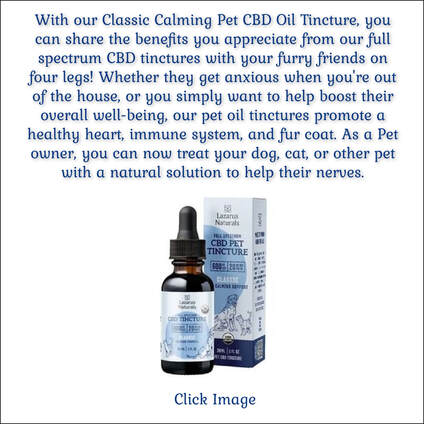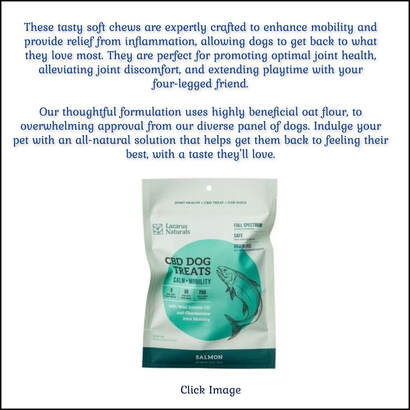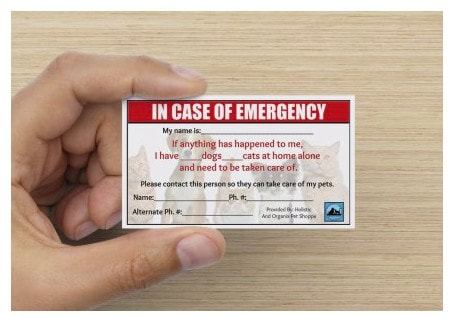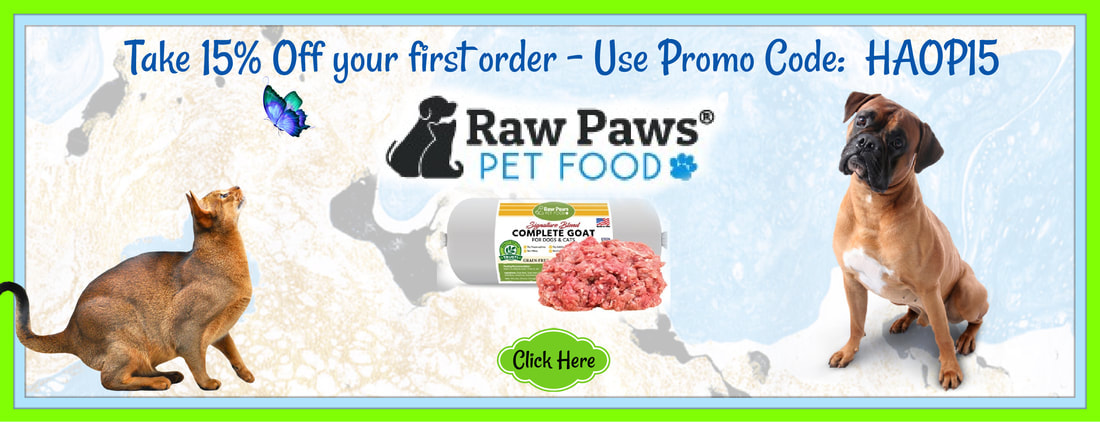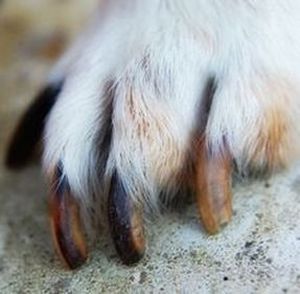
By GermanShepardHealthProblemshere blogspot
Symmetrical Lupoid Onychodystrophy (SLO) is a painful condition causing dogs' nails to slough.
Dog nails aren't supposed to fall off, thought first-time dog owner Terrie Huberman some 18 months ago. That's when she first realized that finding one of her Pug-Poodle mix's nails on the floor of her Sherman Oaks, California, apartment wasn't an isolated incident.
It all started when, after coming in from a walk, Terrie picked up what would turn out to be the keratin shell from one of Bonzo's claws. At the time she thought it was something he'd tracked in from outside. Only later did she learn the shell was a telltale sign of Symmetrical Lupoid Onychodystrophy, SLO for short.
Symmetrical Lupoid Onychodystrophy (SLO) is a painful condition causing dogs' nails to slough.
Dog nails aren't supposed to fall off, thought first-time dog owner Terrie Huberman some 18 months ago. That's when she first realized that finding one of her Pug-Poodle mix's nails on the floor of her Sherman Oaks, California, apartment wasn't an isolated incident.
It all started when, after coming in from a walk, Terrie picked up what would turn out to be the keratin shell from one of Bonzo's claws. At the time she thought it was something he'd tracked in from outside. Only later did she learn the shell was a telltale sign of Symmetrical Lupoid Onychodystrophy, SLO for short.
SLO is an inflammation of the nail matrix where the nail is formed. The pattern of inflammation is similar to lupus, giving the condition its 'lupoid' designation. The inflammatory reaction at the nail matrix results in abnormal nail development and growth, resulting in compromised claws that lift, separate, and often fall off. Flare-ups are painful and many owners first notice a problem when the dog begins favoring or nursing an affected foot.
While SLO can affect all breeds of dogs, some vets report seeing far more cases among certain breeds. 'When I think of SLO, I think of German Shepherds, Miniature Schnauzers, Rottweilers, and Corgis,' says holistic veterinary practitioner Frank Bousaid, DVM, of Harmony Animal Wellness Center in Monroe, Washington. 'In the German Shepherd, it seems to be worse, with more toes involved, in males than females.' His experience supports further anecdotal evidence found online, which cites German Shepherd Dogs as being predisposed to the condition.
While SLO can affect all breeds of dogs, some vets report seeing far more cases among certain breeds. 'When I think of SLO, I think of German Shepherds, Miniature Schnauzers, Rottweilers, and Corgis,' says holistic veterinary practitioner Frank Bousaid, DVM, of Harmony Animal Wellness Center in Monroe, Washington. 'In the German Shepherd, it seems to be worse, with more toes involved, in males than females.' His experience supports further anecdotal evidence found online, which cites German Shepherd Dogs as being predisposed to the condition.
A dog's claw is made up of three distinct layers. The visible outer portion that must be routinely trimmed is hard, dead material. The innermost layer - the 'quick' - is comprised of nerves and the blood supply; this is what bleeds when the nail is trimmed too short. Initial nail growth occurs at the root, located deep in the toe. In dogs with SLO, damage takes place at the root level about three to four months before the nail becomes visible. When affected nails emerge, they are misshapen and can also be hollow, soft or brittle, or discolored.
Onset is typically acute, with one or two claws initially being affected. 'One ( of the hallmarks of SLO is multiple claw lesions,' says Alexander Werner, VMD, Diplomate of the American College of Dermatology. 'If I had a case that came in with a single digit where the claw was abnormal, Lupoid Onychodystrophy would not be high on my list. SLO by definition affects multiple nails.'
Onset is typically acute, with one or two claws initially being affected. 'One ( of the hallmarks of SLO is multiple claw lesions,' says Alexander Werner, VMD, Diplomate of the American College of Dermatology. 'If I had a case that came in with a single digit where the claw was abnormal, Lupoid Onychodystrophy would not be high on my list. SLO by definition affects multiple nails.'
Both vets agree the condition is relatively rare. As a veterinary dermatologist, Dr. Werner estimates he treats fewer than 10 patients per year.
DIAGNOSIS
Achieving a definitive diagnosis can be tricky because it requires a biopsy of the nail matrix, which must be accomplished by removing a piece of the third phalanx - the last part of the toe. This surgical procedure, much like a de-clawing of a cat, has a painful recovery and results in a malformation of any nail growth that follows (since the nail matrix has been surgically altered). For owners looking for an absolute diagnosis, dogs with affected dew claws are considered the best candidates for biopsy.
Due to the highly invasive nature of the biopsv, vets often make an initial diagnosis based on the characteristics of the disease, or, because treatment is well tolerated by most dogs, many vets will begin treatment on the suspicion of SLO? watching for signs of improvement.
DIAGNOSIS
Achieving a definitive diagnosis can be tricky because it requires a biopsy of the nail matrix, which must be accomplished by removing a piece of the third phalanx - the last part of the toe. This surgical procedure, much like a de-clawing of a cat, has a painful recovery and results in a malformation of any nail growth that follows (since the nail matrix has been surgically altered). For owners looking for an absolute diagnosis, dogs with affected dew claws are considered the best candidates for biopsy.
Due to the highly invasive nature of the biopsv, vets often make an initial diagnosis based on the characteristics of the disease, or, because treatment is well tolerated by most dogs, many vets will begin treatment on the suspicion of SLO? watching for signs of improvement.
TREATMENT
Both traditional and holistic practitioners agree on the core treatment protocol for SLO. High-dose essential fatty acids (EFAs), specifically omega-3 and omega-6, along with a generally well-tolerated antibiotic such as tetracycline or doxycycline is the most common approach. Antibiotics are used to try to save affected nails while preventing nail bed infections, which can get into the bone and lead to the loss of the toe. Nail bed infections also affect circulation to the feet. EFAs are used for their anti inflammatory properties.
'In SLO, there is an unexplained inflammatory process that is happening at the cuticle level,' explains Dr. Bousaid. 'There's an infiltrate of inflammatory P cells into the nail bed. That's the immune-mediated part; this huge attack by the immune system on the nail bed. Omega-3s and omega-6s act as an anti inflammatory to help calm down the overactivity.'
When it comes to EFAs, Dr. Bousaid strongly recommends salmon oil dispensed in free-fluid form rather than proceSvSed and encapsulated for convenience. 'I like salmon oil specifically; I think it's the gold standard of fish oils in dogs,' he says, noting that salmon oil has an ideal ratio of omega-3 to omega-6 for dogs. He recommends clients stay away from cod liver oil, which is frequently manufactured in China and can be months or years old by the time it's purchased and consumed in the U.S. He does not recommend the use of flaxseed oil, which is often popular with vegetarian clients looking to avoid animal products. He cautions that Omega-3s and omega-6s from non-animal sources such as flaxseed oil are poorly utilized by dogs.
In addition to antibiotics and high dose fatty acids, Dr. Bousaid also W incorporates vitamin B (specifically niacinamide, not niacin or nicotinic acid), vitamin E, and plain gelatin.
Both traditional and holistic practitioners agree on the core treatment protocol for SLO. High-dose essential fatty acids (EFAs), specifically omega-3 and omega-6, along with a generally well-tolerated antibiotic such as tetracycline or doxycycline is the most common approach. Antibiotics are used to try to save affected nails while preventing nail bed infections, which can get into the bone and lead to the loss of the toe. Nail bed infections also affect circulation to the feet. EFAs are used for their anti inflammatory properties.
'In SLO, there is an unexplained inflammatory process that is happening at the cuticle level,' explains Dr. Bousaid. 'There's an infiltrate of inflammatory P cells into the nail bed. That's the immune-mediated part; this huge attack by the immune system on the nail bed. Omega-3s and omega-6s act as an anti inflammatory to help calm down the overactivity.'
When it comes to EFAs, Dr. Bousaid strongly recommends salmon oil dispensed in free-fluid form rather than proceSvSed and encapsulated for convenience. 'I like salmon oil specifically; I think it's the gold standard of fish oils in dogs,' he says, noting that salmon oil has an ideal ratio of omega-3 to omega-6 for dogs. He recommends clients stay away from cod liver oil, which is frequently manufactured in China and can be months or years old by the time it's purchased and consumed in the U.S. He does not recommend the use of flaxseed oil, which is often popular with vegetarian clients looking to avoid animal products. He cautions that Omega-3s and omega-6s from non-animal sources such as flaxseed oil are poorly utilized by dogs.
In addition to antibiotics and high dose fatty acids, Dr. Bousaid also W incorporates vitamin B (specifically niacinamide, not niacin or nicotinic acid), vitamin E, and plain gelatin.
'Vitamin B serves as a natural free radical scavenger for anything that's collagen based - skin, nails, etc.,' he says. 'It has to do with the development of the dermal layer and aids in the foundational structure of the nail. I use vitamin B for its nail-strengthening properties. It aids in the development of the nail matrix that will harden and become part of the nail. Vitamin E also helps the nail matrix, playing a role in healthy nail formation.' It's believed that the fatty acids and vitamins work in tandem. Fatty acids help reduce inflammation and vitamins B and E serve as tools to help rebuild the nail.
LONG-TERM CHALLENGE
One challenge with treatment is that much of the disease activity takes place before nail growth is even visible. Additionally, the disease is often cyclical, so many vets opt for lengthy treatment plans.
'I usually follow a treatment protocol of four to eight weeks,' says Dr. Werner. 'The four weeks is just to make sure things are going well and to see that we're starting to get some good regrowth of lost nails and no additional nail loss. At eight weeks we'll get a sense of how well the nails are doing. This disease can wax and wane and I want to make sure we're not in a waning phase before I withdraw a drug that might be helpful. Because the therapy is so well tolerated, inexpensive, and benign for long-term use, I usually go six months before thinking of changing the therapy.'
Many vets, especially those who rarely encounter cases of SLO, will prescribe a steroid such as prednisone in an attempt to reduce inflammation. Both Dr. Werner and Dr. Bousaid consider this ill-advised, noting the host of secondary problems that can arise from steroid use.
'In situations where a vet has prescribed steroids to treat suspected or confirmed SLO, a referral to an animal dermatologist is very important,' says Dr. Werner. 'One of the reasons people see dermatologists is to get dogs off steroids for skin conditions. I think steroids are overkill; you may produce a lot of systemic problems by using a potent medication that may or may not be necessary. I think it's pulling out a big gun when you need a sharp shooter.' Steroid use can result in increased thirst, appetite, weight gain, and muscle loss, and can have negative effects on the liver.
'In extreme cases, short-term steroid use may be needed, but given a choice, it's best to use something else,' cautions Dr. Werner.
LONG-TERM CHALLENGE
One challenge with treatment is that much of the disease activity takes place before nail growth is even visible. Additionally, the disease is often cyclical, so many vets opt for lengthy treatment plans.
'I usually follow a treatment protocol of four to eight weeks,' says Dr. Werner. 'The four weeks is just to make sure things are going well and to see that we're starting to get some good regrowth of lost nails and no additional nail loss. At eight weeks we'll get a sense of how well the nails are doing. This disease can wax and wane and I want to make sure we're not in a waning phase before I withdraw a drug that might be helpful. Because the therapy is so well tolerated, inexpensive, and benign for long-term use, I usually go six months before thinking of changing the therapy.'
Many vets, especially those who rarely encounter cases of SLO, will prescribe a steroid such as prednisone in an attempt to reduce inflammation. Both Dr. Werner and Dr. Bousaid consider this ill-advised, noting the host of secondary problems that can arise from steroid use.
'In situations where a vet has prescribed steroids to treat suspected or confirmed SLO, a referral to an animal dermatologist is very important,' says Dr. Werner. 'One of the reasons people see dermatologists is to get dogs off steroids for skin conditions. I think steroids are overkill; you may produce a lot of systemic problems by using a potent medication that may or may not be necessary. I think it's pulling out a big gun when you need a sharp shooter.' Steroid use can result in increased thirst, appetite, weight gain, and muscle loss, and can have negative effects on the liver.
'In extreme cases, short-term steroid use may be needed, but given a choice, it's best to use something else,' cautions Dr. Werner.
PROGNOSIS
While not curable, most dogs tolerate treatment well and once it stimulates new nail growth, antibiotics can often be eliminated from a maintenance regimen of EFAs and vitamins, when flare-ups occur, booties or restricted activity are recommended to help protect the affected claws. Many patients report success with bathing the feet in a saline or diluted antiseptic solution after walks.
'I don't think it's curable, but it's controllable and most dogs do very well,' says Dr. Werner.
Such is the case with Bonzo. One year into treatment, the veterinarian successfully dropped antibiotics from Bonzo's treatment plan; Terrie continues to give Bonzo EFAs and vitamin E daily. An energetic bundle of youthful energy, his quality of life remains unaffected, except for occasional flare-ups, which fortunately are nowhere near as involved as the initial presentation of the disease.
'His nails are looking much better,' she says. 'The SLO is totally manageable now. When he has a flare-up, mostly in the summer, we avoid going hiking. I feel like it has stabilized, and I am not nearly as panicked about it.'
While not curable, most dogs tolerate treatment well and once it stimulates new nail growth, antibiotics can often be eliminated from a maintenance regimen of EFAs and vitamins, when flare-ups occur, booties or restricted activity are recommended to help protect the affected claws. Many patients report success with bathing the feet in a saline or diluted antiseptic solution after walks.
'I don't think it's curable, but it's controllable and most dogs do very well,' says Dr. Werner.
Such is the case with Bonzo. One year into treatment, the veterinarian successfully dropped antibiotics from Bonzo's treatment plan; Terrie continues to give Bonzo EFAs and vitamin E daily. An energetic bundle of youthful energy, his quality of life remains unaffected, except for occasional flare-ups, which fortunately are nowhere near as involved as the initial presentation of the disease.
'His nails are looking much better,' she says. 'The SLO is totally manageable now. When he has a flare-up, mostly in the summer, we avoid going hiking. I feel like it has stabilized, and I am not nearly as panicked about it.'
RELATED ARTICLE: What you can do ...
* Teach your dog to calmly accept foot and nail handling so you can routinely examine his nails.
* Talk to your groomer. Groomers are often the first ones to notice nail abnormalities.
* Watch for excessive foot-licking and chewing; make an appointment with your vet if you see this.
* If your dog has SLO, try to have him seen by (or have your vet consult with) a veterinary dermatologist.
RELATED ARTICLE: ANOTHER OPTION
Pentoxifylline, brand name Trental, has been used in Western medicine with some success to help treat dogs with SLO. According to Dr. Bousaid, the drug was originally being looked at to treat cases of Ear Margin Necrosis, due to its ability to increase tissue vascularity. It is not yet licensed for use in animals, but is licensed for human use to treat peripheral artery disease. The drug helps increase blood flow by decreasing its viscosity. Because both vitamin B and Trental increase blood flow, they should not be given together. Common side effects include nausea, and with no available generic, the drug can be costly when dosed for larger animals.
RELATED ARTICLE: A CASE HISTORY OF SLO FROM A WDJ SUBSCRIBER
I adopted my greyhounds, Cleo and Ramses, from Personalized Greyhounds in Camp Hill, Pennsylvania on April 11, 2009.
In May of 2009 Ramses was running in the backyard and tore one of his toenails off in the grass. The quick was exposed and it was bleeding profusely. The vet sedated him and then trimmed and wrapped his foot and prescribed an antibiotic. After several months the nail cap began to grow back, but as soon as it did it was scaly and immediately sloughed off The quick was no longer raw so it didn't bother him.
* Teach your dog to calmly accept foot and nail handling so you can routinely examine his nails.
* Talk to your groomer. Groomers are often the first ones to notice nail abnormalities.
* Watch for excessive foot-licking and chewing; make an appointment with your vet if you see this.
* If your dog has SLO, try to have him seen by (or have your vet consult with) a veterinary dermatologist.
RELATED ARTICLE: ANOTHER OPTION
Pentoxifylline, brand name Trental, has been used in Western medicine with some success to help treat dogs with SLO. According to Dr. Bousaid, the drug was originally being looked at to treat cases of Ear Margin Necrosis, due to its ability to increase tissue vascularity. It is not yet licensed for use in animals, but is licensed for human use to treat peripheral artery disease. The drug helps increase blood flow by decreasing its viscosity. Because both vitamin B and Trental increase blood flow, they should not be given together. Common side effects include nausea, and with no available generic, the drug can be costly when dosed for larger animals.
RELATED ARTICLE: A CASE HISTORY OF SLO FROM A WDJ SUBSCRIBER
I adopted my greyhounds, Cleo and Ramses, from Personalized Greyhounds in Camp Hill, Pennsylvania on April 11, 2009.
In May of 2009 Ramses was running in the backyard and tore one of his toenails off in the grass. The quick was exposed and it was bleeding profusely. The vet sedated him and then trimmed and wrapped his foot and prescribed an antibiotic. After several months the nail cap began to grow back, but as soon as it did it was scaly and immediately sloughed off The quick was no longer raw so it didn't bother him.
Everything was good until December 2010; Ramses had just turned 6. While getting his toenails clipped at the vet's he yelped and jumped off the table when the vet tech was beginning to clip a nail. He was bleeding and the vet was called in to take a look. The nail cap was standing up; it had split up the underside of the nail. She clipped it off and bandaged his foot. That started a downward spiral which for several months required a lot of vet visits. Right away Ramses started getting loose nail caps; they would split up the back and hang by a 'thread' on the top of the foot. This made walking painful so he was bandaged most of the time. He lost all the nails on that foot.
I emailed Peggy Levin, the president of Personalized Greyhounds, to ask her if she had ever had this problem with other 'greyts.' She told me about SLO; I immediately contacted my vet. Ramses by this time had started to lose nails on his other front foot. We began a treatment plan for him. Aller G-3 capsules: 2 caps 2x/day. Niacinamide 500mg: 1 tablet 3x/day. Vitamin E 400 I.U.: 1 cap 2x/day. Doxycycline 200mg: 2x/day.
We started this regimen in January 2011. Eventually Ramses lost all of his nail caps. During this period as the nails were becoming loose and falling off he experienced a lot of pain. He received Tramadol HCL 50 mg: 1.5 tabs 2x/day. His feet were bandaged when the quick was raw and bleeding. After a month Ramses could not tolerate the antibiotic. He had loose stool, vomiting, and loss of appetite. The vet took him off of doxycycline and administered a Covenia injection. Ramses immediately perked up and began eating again.
I emailed Peggy Levin, the president of Personalized Greyhounds, to ask her if she had ever had this problem with other 'greyts.' She told me about SLO; I immediately contacted my vet. Ramses by this time had started to lose nails on his other front foot. We began a treatment plan for him. Aller G-3 capsules: 2 caps 2x/day. Niacinamide 500mg: 1 tablet 3x/day. Vitamin E 400 I.U.: 1 cap 2x/day. Doxycycline 200mg: 2x/day.
We started this regimen in January 2011. Eventually Ramses lost all of his nail caps. During this period as the nails were becoming loose and falling off he experienced a lot of pain. He received Tramadol HCL 50 mg: 1.5 tabs 2x/day. His feet were bandaged when the quick was raw and bleeding. After a month Ramses could not tolerate the antibiotic. He had loose stool, vomiting, and loss of appetite. The vet took him off of doxycycline and administered a Covenia injection. Ramses immediately perked up and began eating again.
By the end of April all of the nail caps were gone but now he started to lick his feet and if they weren't bandaged he would lick them raw. The vet suggested laser therapy - 6 treatments every 2 days - and 1 percent silver sulfadiazine cream on the raw spots and bandages. After two laser treatments the feet began to show improvement. He still insisted on licking so I bought baby socks with grippers on the bottoms. I put these on his feet and hold them in place with adhesive tape. The laser treatments did wonders. All the hair grew back and the sore spots healed.
Ramses now has nail caps on all of his nails. They are thin, scaly and deformed, but they are there. He can now walk a complete circuit around our neighborhood and is a happy boy. We discontinued the antibiotic injections in June and he remains on the Aller G-3, niacinamide, and vitamin E. He wears socks all the time; when it is wet outside I cover his socks with Glad Press n Seal.
This is a painful problem and the cure is long. I will probably keep socks on Ramses for the remainder of his life. He will take the meds forever, too. - Pam Mowrey, Waynesboro, PA.
Freelance writer and avid agility competitor Stephanie Colman has been training dogs in Los Angeles for 10 years.
Ramses now has nail caps on all of his nails. They are thin, scaly and deformed, but they are there. He can now walk a complete circuit around our neighborhood and is a happy boy. We discontinued the antibiotic injections in June and he remains on the Aller G-3, niacinamide, and vitamin E. He wears socks all the time; when it is wet outside I cover his socks with Glad Press n Seal.
This is a painful problem and the cure is long. I will probably keep socks on Ramses for the remainder of his life. He will take the meds forever, too. - Pam Mowrey, Waynesboro, PA.
Freelance writer and avid agility competitor Stephanie Colman has been training dogs in Los Angeles for 10 years.

